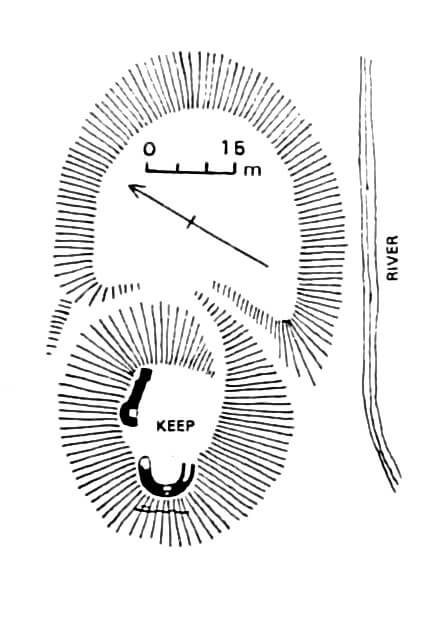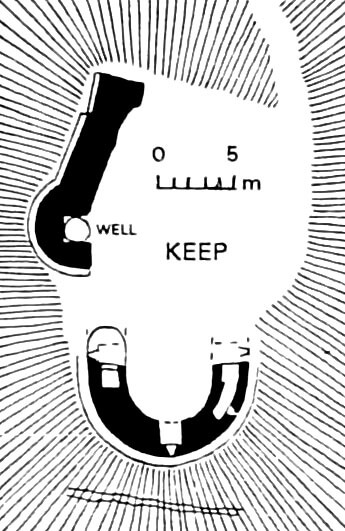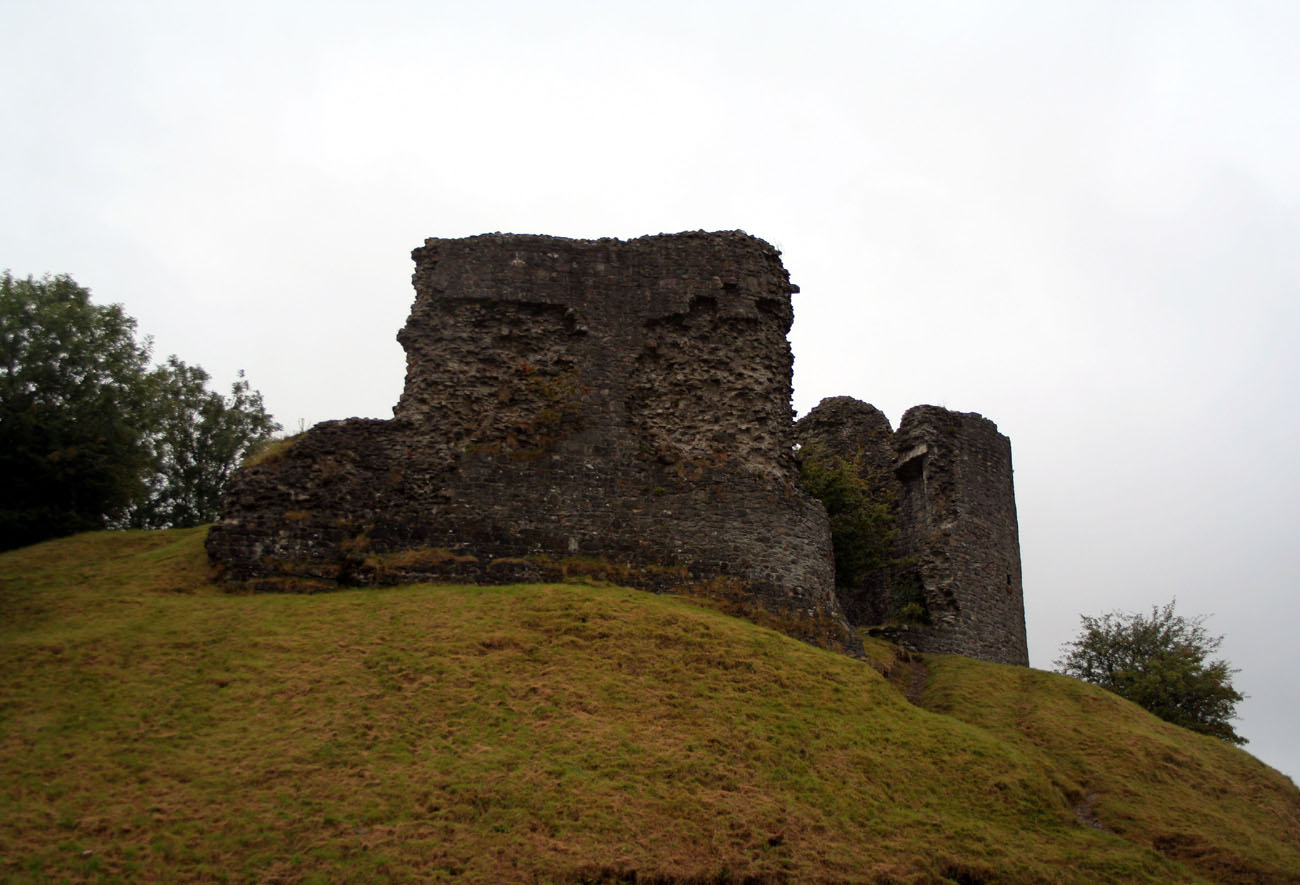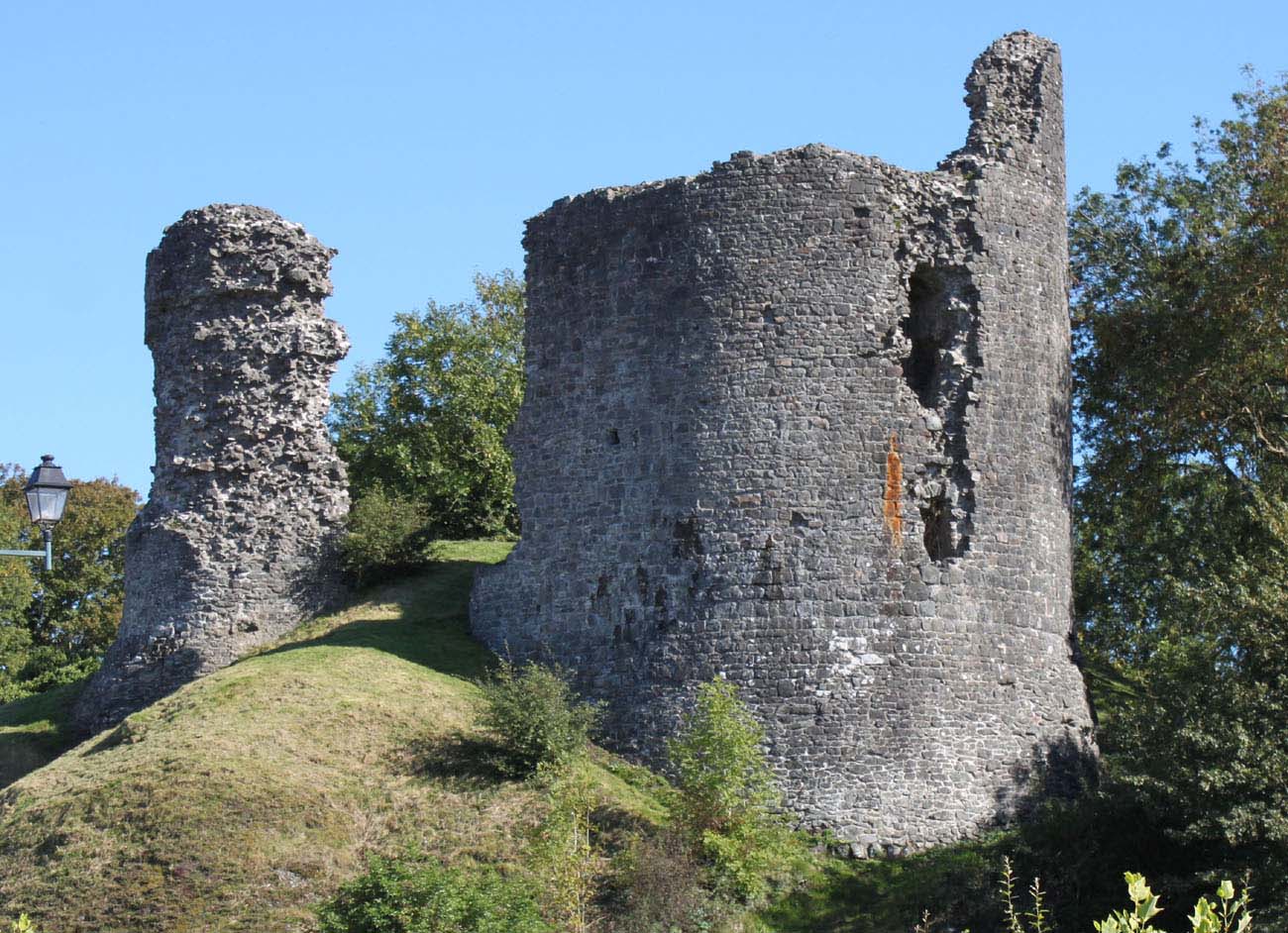History
Llandovery’s first wood and earth, motte and bailey castle was built around 1116 by the Norman knight Richard Fitz Pons, one of the barons whose energy the English king directed to conquer Welsh territory. He took part in the conquest of the Brecon lordship by Bernard de Neufmarché at the end of the 11th century, after which he decided to occupy his own piece of land, secured by the Llandovery Castle, situated in the center of the important routes connecting Dyfed with Powys. In the aforementioned 1116, King Henry I confirmed him the lordship of Cantref Bychan.
In the 12th century, the castle was attacked many times by the Welsh princes of Deheubarth. The English king Henry II, realizing its strategic location, took over the stronghold and in the years 1159-1161 financed the reconstruction after the destruction of 1158, but in 1162 the castle was destroyed again by Rhys ap Gruffydd. In 1210 castle owner was the Welsh Rhys Grug, thanks to an agreement with King John. John turned against Rhys shortly after, and in 1213 began supporting Rhys Leauanc’s claims to Dinefwr and Llandovery. Three years later, during the division of lands after the death of the ruler of Deheubarth, Rhys ap Gruffydd, the castle was acquired by a certain Maelgwn, but already in 1227 it was again in the power of Rhys Grug. It was only in 1277, during the war between Edward I and Wales, that it became the property of the English, with the short exception of a few months in 1282, when Llandovery was taken over by Llywelyn the Last.
After defeating the Welsh in the 1280s, the castle was given by King Edward I to John Giffard, the first baron of Giffard, who probably rebuilt it into a stone stronghold. In 1299, the castle passed into the hands of the Audley family from Helleigh, and then to the Touchet family in the fourteenth century. In 1403 it was besieged during the Welsh rebellion of Owain Glyndŵr. Then in the presence of king Henry IV at the castle was executed sympathizer of Glyndŵr named Llewelyn ap Gruffudd Fychan, who deliberately fooled the march of English troops. In 1532, the castle was burned during the rebellion of Hywel ap Rhys and has been in ruin since then.
Architecture
The castle was erected on a hill about 13 meters high, on the west bank of the Bran River, among its numerous tributaries and slightly north of the mouth to the Tywi River. Since the end of the 13th century, it consisted of the perimeter of the defensive walls, reinforced from the west by a massive semicircular tower with a diameter of 10.5 meters. In the lower part, situated on the slope, it had an oblique plinth typical of Anglo-Norman keep. The lower storey, provided only with a small opening, served as a warehouse and for defense, while the first floor, equipped with a latrine, may have already been residential. It is not certain whether the perimeter of the walls connected to the tower was a roofed structure or formed a miniature courtyard. On the north side, along the length of the perimeter, there was a small, semicircular from the outside tower, but with a four-sided interior. There was a well in its center. To the east of the hill there was a semicircular outer bailey, probably with wooden or half-timbered economic buildings.
Current state
A large part of the semicircular tower and a fragment of the defensive wall located next to it, on the northern side, with a smaller semicircular tower with a quadrilateral interior, have survived to modern times. Admission to the castle area is free.
bibliography:
Kenyon J., The medieval castles of Wales, Cardiff 2010.
Salter M., The castles of South-West Wales, Malvern 1996.
The Royal Commission on The Ancient and Historical Monuments and Constructions in Wales and Monmouthshire. An Inventory of the Ancient and Historical Monuments in Wales and Monmouthshire, V County of Carmarthen, London 1917.





